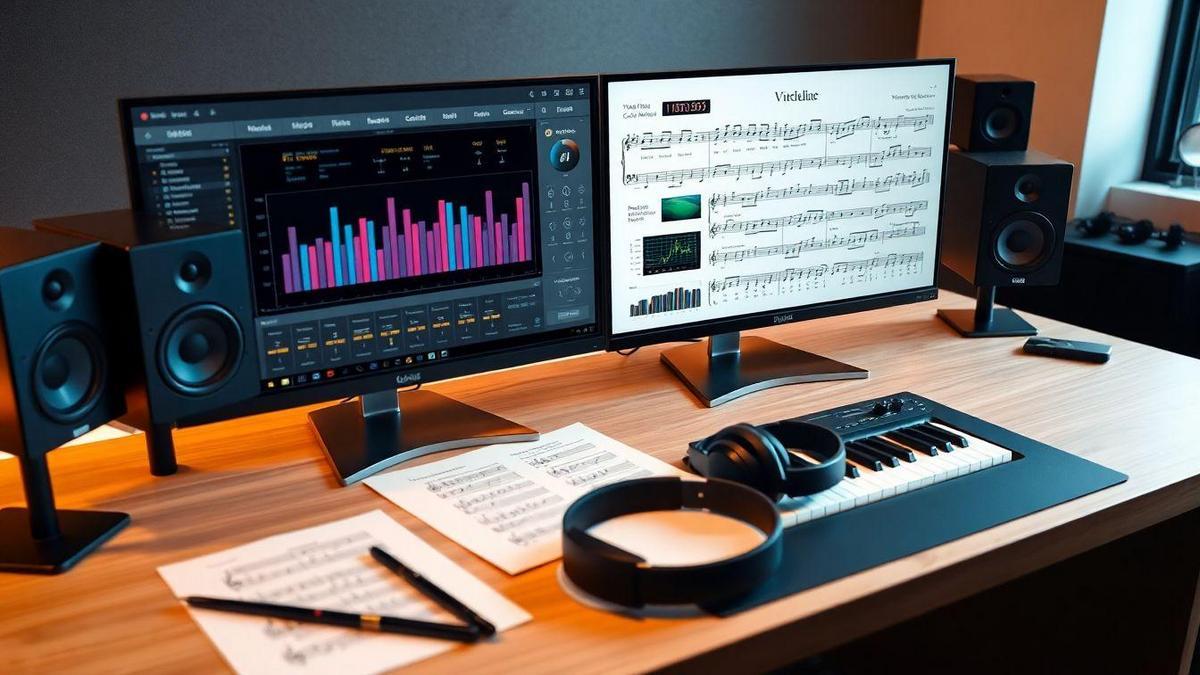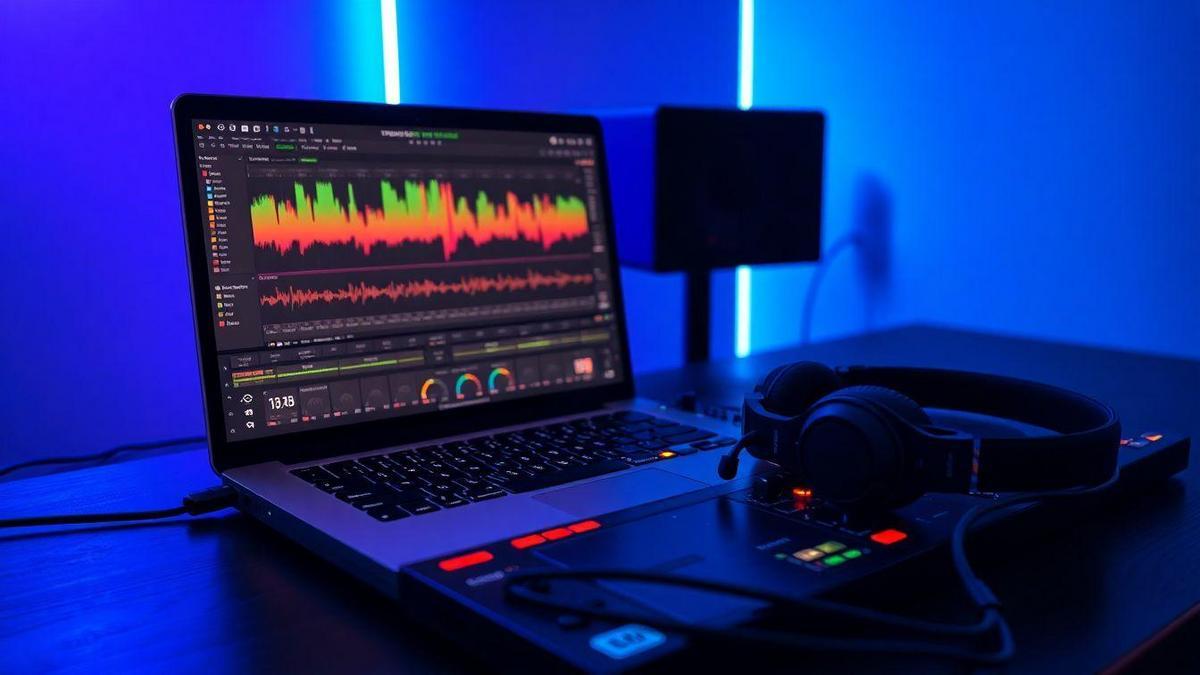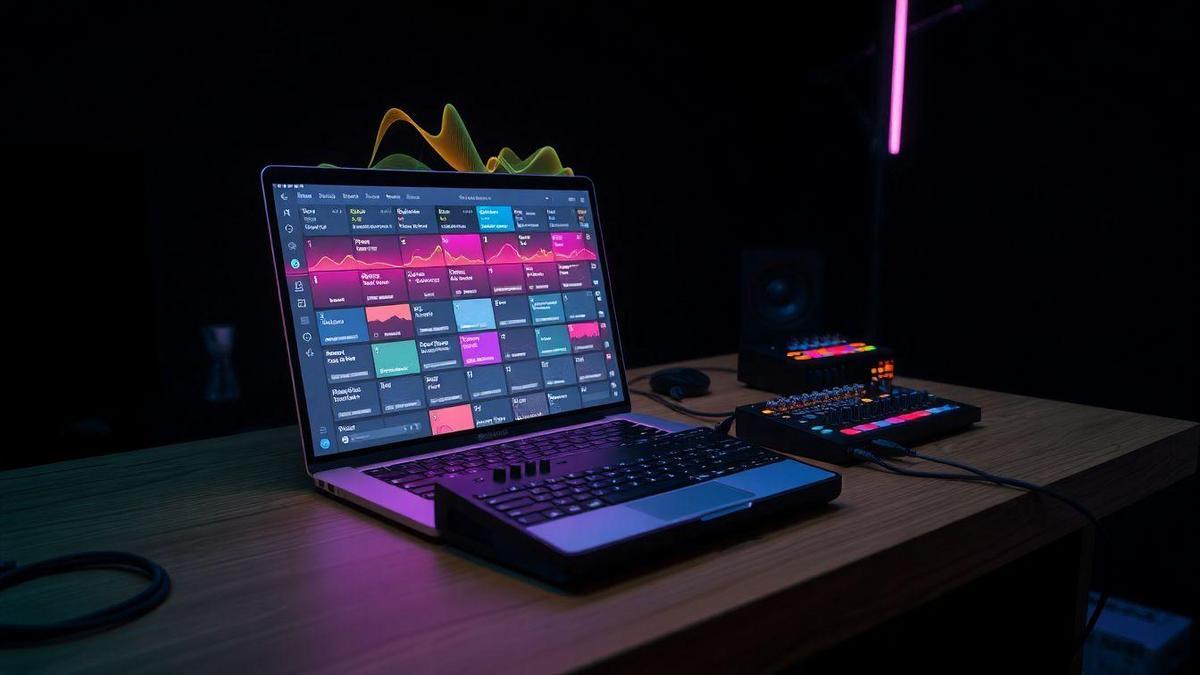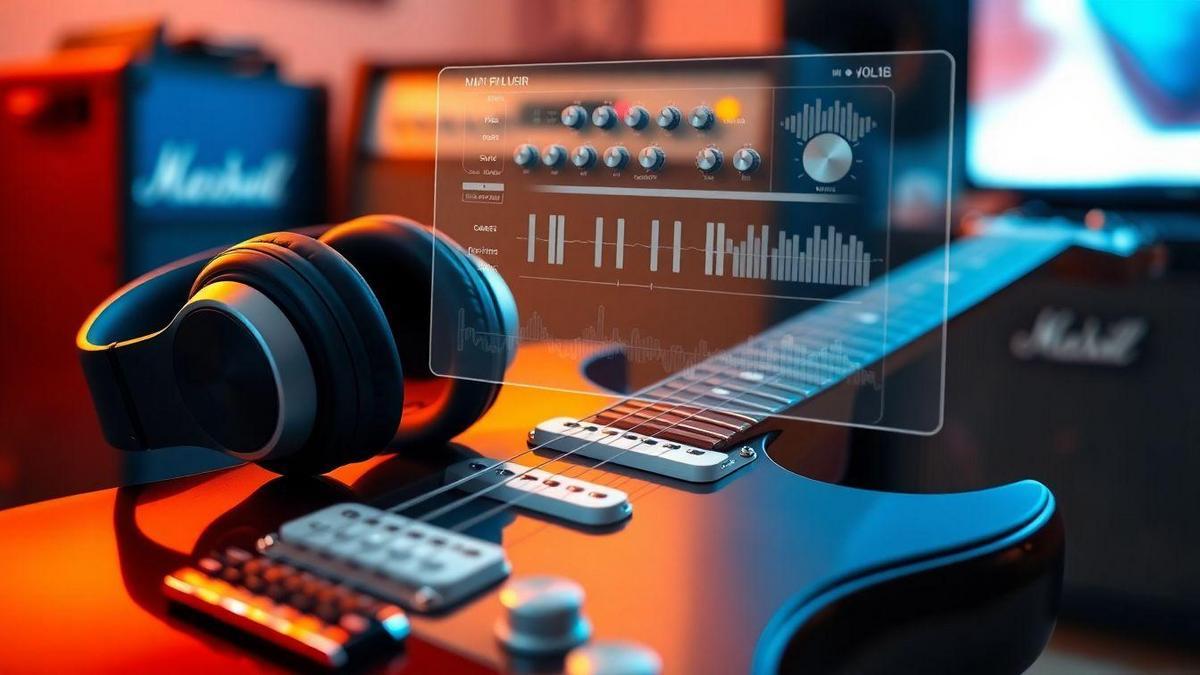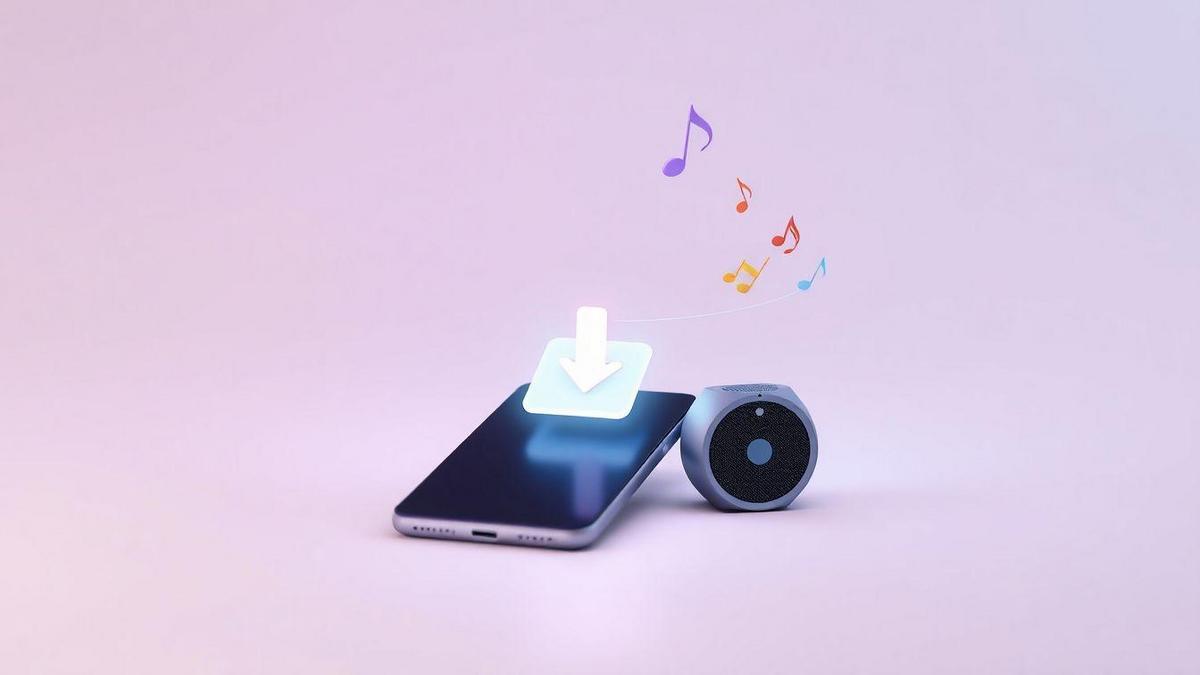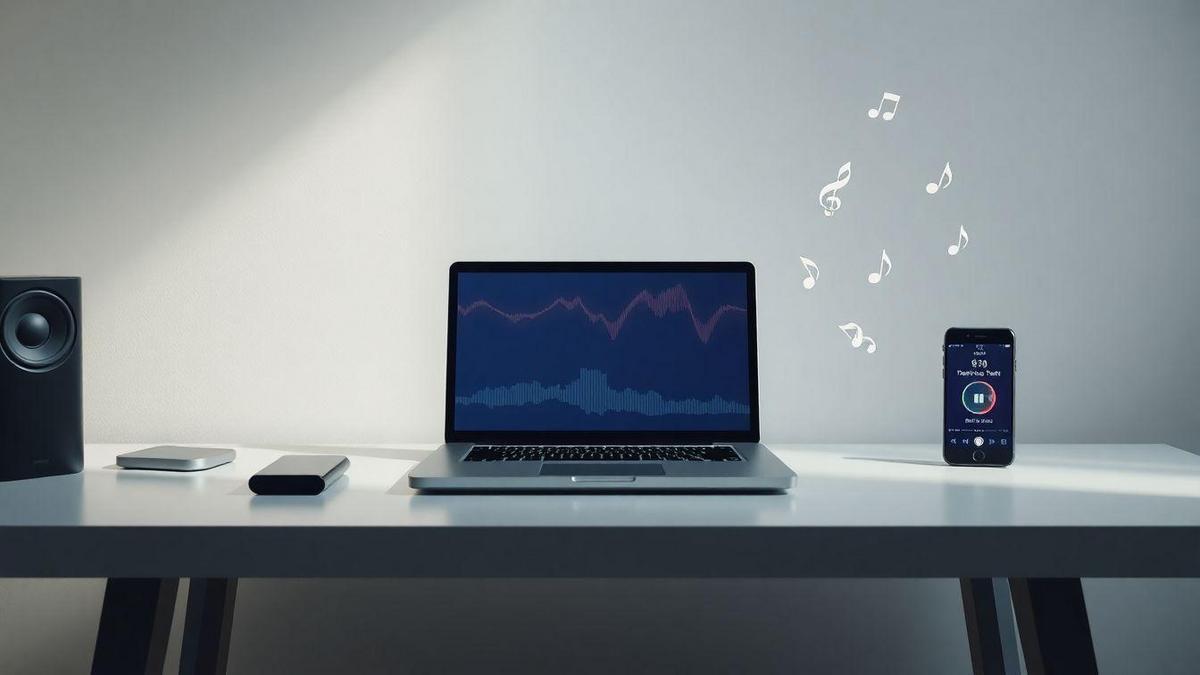notation software for composers creating orchestral scores with playback samples is what this guide helps you master. At Sambizanga Musik you get clear, hands‑on steps to learn the basics, build realistic playback, and choose the right sample libraries. You’ll see simple DAW integration, a quick start checklist, mixing tips to make your mockups sound real, and ways to bring African and diasporic textures into your scores.
Key Takeaway
- Choose notation software that supports high‑quality orchestral samples.
- Load pro sample libraries for more realistic playback.
- Sambizanga Musik gives simple workflows to build quick mockups.
- Mix on good speakers so the orchestral playback sounds true.
- Use our guides to write clear parts and save studio time.
How Sambizanga Musik helps you learn notation software for composers creating orchestral scores with playback samples
Sambizanga Musik shows you how to turn ideas on paper into sounding sketches. You’ll learn fast note entry, set articulations, and assign instruments so your score plays back like a small ensemble. The tutorials use real examples and samples, so you hear your decisions immediately.
Step‑by‑step projects mirror real composing: mockup a string quartet, add brass hits, then balance dynamics and reverb so the playback feels alive. Lessons focus on tools you’ll actually use — score layout, playback engine settings, sample mapping and mixing tips — all explained plainly so you can practice without stumbling.
Sambizanga Musik blends practical tips with cultural context, showing how orchestral scoring can borrow rhythms and timbres from African styles. Each lesson ends with a small, playable result so you don’t just read about notation software for composers creating orchestral scores with playback samples — you make music that sounds like music.
What you learn: music notation software basics and score playback engine
You start with core notation tasks: note entry (mouse, keyboard, MIDI), rests, key/time signatures, and layout. Then add dynamics, articulations, and tempo changes so the score reads like a performance guide. Those basics make your score readable for players and the playback engine.
Next you dive into the playback engine: instrument libraries, sample quality, humanization, and expression controls. Learn routing of virtual instruments, tweaking velocity curves, and setting mixing sends so samples breathe. Practical shortcuts save hours of fiddling.
| Topic | Focus | What you can do after |
|---|---|---|
| Note entry & layout | Fast input methods and clean page layout | Produce clean, readable scores quickly |
| Dynamics & articulations | Expressive markings and performance cues | Make playback respond like a real player |
| Playback engine setup | VSTs, libraries, routing, humanization | Create believable mockups with samples |
Who this is for: beginner composers, home studio builders, self‑taught artists
If you’re a beginner composer, Sambizanga Musik gives a clear map: start small, build motifs, and hear those motifs with samples. Bite‑size projects build skill and confidence.
Home studio builders and self‑taught artists get lessons combining notation with studio steps — routing VSTs, buffer sizes, and matching libraries to your computer. Make orchestral mockups that impress collaborators and clients without needing a pro studio.
Start with a short melody and let the samples tell you where to add color.
Quick start checklist for your first orchestral mockup
Get your first mockup done in a few focused steps. Work in short bursts, test playback often, and don’t chase perfection on day one.
- Pick a simple melody and harmony (8–16 bars).
- Assign core sections: strings, woodwinds, brass, percussion.
- Enter notes via MIDI or step input and normalize rhythms.
- Add basic dynamics and two articulations per section (e.g., legato, staccato).
- Load a decent sample library and set volume/velocity curves.
- Add reverb and a simple bus send for cohesion; export a demo mix.
Compare music notation software so you can pick tools for realistic orchestral playback
If you want notation software for composers creating orchestral scores with playback samples, choose tools that feel like real players, not robots. Ask what matters most: score engraving, fast entry, or lifelike playback. Some apps focus on print quality; others on sample playback and articulation control.
Score editors that push playback often pair with big sample libraries or deep MIDI controls — which means CPU and disk space matter. Consider built‑in samples, VST support, or Kontakt compatibility. Sambizanga Musik tests tools with real projects to show which combos give believable brass, breathing woodwinds, and expressive strings without a huge budget.
Free vs paid music notation software and orchestral sample libraries
Free tools can surprise you. MuseScore gives clean engraving and basic playback; layer free sample packs for better sound. BBC Symphony Discover and Sonatina Symphonic are examples of free libraries that let you sketch ideas.
Paid products push realism further. Dorico, Sibelius, and Finale offer deeper MIDI expression, articulation mapping, and tighter integration with premium libraries (Spitfire, EastWest, Orchestral Tools). Those libraries add round‑robin samples, multiple mic mixes, and scripted articulations that transform a demo into a breathing performance.
| Feature | Free options | Paid options |
|---|---|---|
| Score engraving | Good (MuseScore) | Excellent (Dorico, Sibelius, Finale) |
| Playback | Basic | Advanced expression and scripting |
| Sample libraries | Free packs (limited articulations) | Large libraries with articulations, mic positions |
| Workflow speed | Fine for sketches | Faster for large projects |
| Cost | $0 | $100–$1000 (software libraries) |
Quick tip: start with a free setup to learn mapping and dynamics, then upgrade parts that block realism—strings and solo winds are often worth the spend.
Key features to check: realistic orchestral samples, virtual orchestral instruments, MIDI orchestration
- Listen to the samples: multiple dynamics, legato transitions, and articulation scripts matter.
- Check VST/Kontakt hosting and articulation mapping from score to sample engine.
- Ensure per‑note expression, CC lanes, and humanize tools are editable behind the score.
Fast feature shortlist for your next download
- VST/Kontakt support
- Articulation mapping from score to sample
- Multiple mic positions or mixes
- Legato and round‑robin sampling
- Per‑note expression (CC1/CC11) editing
- Reasonable CPU/disk footprint
Sambizanga Musik recommends testing a short mockup. If the playback makes you smile, you’re on the right track.
Step‑by‑step guides to integrate notation software with FL Studio, Ableton Live and Logic Pro X
Export MIDI from your notation program, import into your DAW, and load orchestral libraries. Treat the exported file like a blueprint: tracks = instruments, channels = parts, tempo map = conductor. Sambizanga Musik shows habits that cut setup time and keep focus on music, not menus.
Each DAW has quirks: FL Studio uses plugin wrappers, Ableton Live prefers MIDI tracks and external instrument devices, and Logic Pro X gives tight score‑to‑track workflows. Learn how each handles tempo maps, program changes, and MIDI channels.
Keep projects tidy: name tracks before export, group similar sections, and bake a version with expression data and one without quantize. A naming rule (e.g., SCOREInstrumentSectionBarRange) saves hours later.
How to export MIDI from notation software and use DAW integration
Export MIDI with bars, tempo map, and controller lanes (dynamics, CC1, CC11). Choose SMF type 1 to keep tracks separate. Turn off automatic quantize and export human timing if the mockup uses rubato. Save MusicXML when your DAW/library reads articulations from metadata.
In the DAW, create matching MIDI tracks and route each to a sampler or Kontakt instance. Check MIDI channels and keyswitches. If timing oddities appear, compare the DAW’s tempo map vs. exported tempo track.
Callout: Always export a tempo map and a version without quantize — this keeps playback samples aligned and saves rebuilding the project.
How to map sample‑based orchestration and load orchestral playback libraries
Load your orchestral player (Kontakt, Play, Spitfire) as multi‑out or multiple instances. For big libraries, use one instance per section (Strings, Woodwinds, Brass) to keep CPU stable. Assign instruments to MIDI channels and route outputs to separate mixer tracks.
Articulations are tricky: use program changes or keyswitch notes and keep a legend. Test velocity layers and tweak the velocity curve so soft notes don’t sound thin. Save a DAW template (e.g., SambizangaMusikOrchTemplate) to speed future sessions.
| Task | FL Studio | Ableton Live | Logic Pro X |
|---|---|---|---|
| Load sampler/player | Plugin Wrapper → Manage → Load | MIDI Track → Instrument Device → Load VST/AU | Software Instrument Track → AU/VST → Load |
| Route MIDI to player | Link Piano Roll to plugin | Set track output to plugin | Assign track output to instrument |
| Multi-outs / mixer routing | Wrapper outputs to mixer tracks | Plugin multi‑out to separate tracks | Multi‑out AU to aux channels |
| Keys/CC mapping | Channel settings & automation | MIDI mapping & clip envelopes | MIDI Draw & Smart Controls |
Simple routing steps for your score‑to‑DAW flow
- import MIDI → create matching MIDI tracks → load instruments → map channels/keyswitches → route outputs → save template
Top orchestral sample libraries and virtual instruments Sambizanga Musik tests for realistic playback
If you use notation software for composers creating orchestral scores with playback samples, the choice of library will make mockups sing or fall flat. We test libraries on legato, dynamic swells, fast runs, and human response.
We judge tone, scripting, mic options, and CPU/RAM use. Some libraries bloom with a few velocity layers and good reverb; others need careful mixing. Our picks aim for realism without making your laptop cry.
Best free orchestral libraries for beginners and low‑CPU setups
Spitfire LABS, Sonatina Symphonic, and the VSCO Community Edition give useful sounds with small RAM footprints. Great for sketching ideas from notation apps and for learning balance without spending money.
Recommended paid libraries for deep, expressive orchestral playback
Spitfire Audio (BBC/Albion), Orchestral Tools, EastWest, and Vienna Symphonic Library bring detailed scripting, many articulations, and mic positions. They cost more but reward you with realism and control—better legato, velocity response, and phrase behavior.
| Library (example) | Price Tier | CPU / RAM Impact | Best for |
|---|---|---|---|
| Spitfire LABS | Free | Low | Quick sketches, atmosphere |
| Sonatina Symphonic | Free | Low | Beginners, notation playback |
| Spitfire BBC / Albion | Paid | Medium–High | Film mockups, expressive strings |
| Orchestral Tools Berlin | Paid | High | Mixing flexibility, mic control |
Tip: if your system struggles, load single mic mixes, use track freezing, and increase buffer size before adding layers.
Compatibility and CPU checklist for your home studio
Match library to rig:
- CPU: 4 cores, 3.0 GHz recommended for heavy libraries
- RAM: 16 GB minimum; 32 GB for large templates
- Storage: SSD for sample streaming; 50–200 GB per big library
- Buffer: 512–1024 samples while composing; lower for low‑latency recording
- Host format: confirm compatibility with DAW and notation tools
.bar { fill: #4a90e2; }
.label { font: 12px sans-serif; fill: #222; }
.axis { stroke: #ccc; stroke-width: 1; }
Free (Low)
Paid (Med–High)
Large Orchestral (High)
Low
Med
High
Mixing and mastering basics to make your orchestral mockups sound real on any speakers
Sambizanga Musik tip: listen on cheap earbuds and a smart speaker. If it translates there, it will translate everywhere.
Balance levels and panning so each section has space. Put strings slightly wider than brass, keep solo lines centered, and carve space with EQ. Small moves make a huge difference in realism.
Think of depth: use layered reverbs (short room longer hall) with pre‑delay to keep attack clear. Gentle compression on groups keeps dynamics alive without squashing life out of the performance. If you use notation software for composers creating orchestral scores with playback samples, export stems and mix them like real recordings.
Finish with reference tracks and different speakers. Compare to a recorded orchestral piece that matches your style. Fix one thing at a time—EQ, then reverb, then dynamics.
EQ, reverb and dynamics tips for clarity and depth
- Subtractive EQ first: cut 200–500 Hz muddiness on busy textures.
- Strings often benefit from a small 2–5 kHz presence lift.
- Send reverb (short plate/room for close; long hall for full sections).
- Use light bus compression to glue parts; keep dynamic range alive.
Performance tips: buffer, memory and CPU settings to avoid dropouts
- Real‑time playing / sketching: buffer 64–256 (low latency).
- Mixing / rendering: buffer 512–2048 (stable playback).
- Sample‑heavy libraries: 512 and SSD streaming reduces RAM load.
| Use case | Buffer size | What it helps |
|---|---|---|
| Real‑time playing / sketching | 64–256 | Low latency |
| Mixing / rendering | 512–2048 | Stable playback |
| Sample‑heavy libraries | 512 and SSD | Reduces RAM use and load spikes |
Simple plugin chain to polish your mockup
A short, sensible chain polishes without killing life:
- High‑pass filter on individual tracks
- Corrective EQ on groups
- Light bus compressor (2:1, slow attack)
- Two reverb sends (room hall) with pre‑delay
- Gentle stereo imaging and a soft limiter on master
How to write orchestral scores that bring African and diasporic textures to life using notation software for composers
Make your score reflect African and diasporic colors, not a copy‑pasted sample pack. Start by listening and transcribing: record grooves, hum melodies, and notate small rhythmic details. In notation software, give those parts space — separate percussion staves, solo vocal staves, and group staves for orchestral sections. This keeps textures readable for players and clear for playback engines.
Create templates routing percussion staves to world‑instrument samples and strings to orchestral libraries. Use articulations, expression maps, and keyswitches so playback reflects subtle attacks, rolls, and pitched inflections. Build humanize settings and round‑robin rules to avoid mechanical repetition.
Label parts with cultural context and performance notes so players and engineers know what to aim for. Include reference audio files in the project for a faithful sketch of the final result.
“Listen first, then notate what the ear remembers.”
Notation tips for rhythms, percussion, and call‑and‑response
- Write rhythms in repeating 2–4 bar cells with small variations.
- Use percussion staves with percussion maps for correct sample triggering.
- Mark accents, flams, ghost notes, and add short text cues like “play loose” or “push feel.”
- For call‑and‑response, treat the response as a separate instrument group and use dynamics/hairpins to shape the answer. Use slash notation for freedom.
Quick setup: assign percussion channels, map samples to stave lines, add playback articulations, create repeat cells, and attach reference audio.
Using orchestral textures and sample‑based orchestration to honor cultural elements
- Pick samples that respect original timbres; when you can’t record an instrument, layer samples (e.g., plucked harp nylon guitar) and EQ for character.
- Combine real percussion with orchestral colors—muted strings behind a djembe ostinato add warmth without erasing the pulse.
- Map keyswitches and velocity zones so articulations match your notation.
- Use convolution reverb with IRs that match the desired performance space.
- Name sample sources and add cultural context notes in the score; consult cultural bearers when possible.
| Notation / Need | Instrument or Sound | Sample choice & playback tip |
|---|---|---|
| Fast hand ostinato (8ths in 332) | Djembe / conga | Use multi‑velocity djembe sample; slight humanize low pass |
| Long, harp‑like arpeggio | Kora / harp | Layer kora with plucked nylon; add subtle chorus |
| Pitched bell motif | Bell / agogo | Bright metallic sample; short decay light reverb |
| Soft, buzzing texture | Mbira / thumb piano | Mbira library with room close mic mixed 60/40 |
| Shaker groove | Shaker / caxixi | High‑pass to reduce mud; velocity variation for shuffle feel |
| Call lead | Voice / instrument | Warm solo violin/trumpet with breathy attack and slow vibrato |
Tip: Name sample sources in the score and add a short note about cultural context for players and engineers.
Short examples you can drop into your score
- Percussion ostinato — 8th pattern grouped 332 with accents on beats 1 and 4.
- Call motif — short four‑note phrase (root, raised 2, minor 3, root) on a narrow timbre.
- Response pad — muted strings holding a 2‑bar sus chord with slow crescendo into beat 1. Label each with playing style (e.g., “loose swing,” “place lightly”).
Why choose notation software for composers creating orchestral scores with playback samples
Choosing notation software that supports VSTs/Kontakt and exports high‑quality MIDI/Expression maps shortens the path from idea to believable mockup. It keeps notation readable for live players and data‑rich for sample engines. Use the quick start checklist, templates, and consistent naming habits to streamline sessions. Start with free tools to learn mapping, then upgrade where realism matters most.
Conclusion
You now have a clear roadmap to turn paper ideas into breathing mockups. Pick notation software that hosts VSTs/Kontakt, load the right sample libraries, and use smart DAW integration so your score behaves like real players — not a robot reading sheet music. Start small with the quick start checklist, humanize timing and velocity, and mix on good speakers so your sketches translate across devices.
Think of your setup as a toolbox (articulations, expression CCs, reverb sends) and a map (export MIDI/tempo maps, route instruments, save templates). Tweak CPU/buffer settings, freeze heavy tracks, and choose samples that honor African and diasporic textures. Small, consistent habits save studio time and make mockups convincing.
You don’t need every premium library to start. Use free packs to learn, then invest in strings, solo winds, and detailed legatos. Write clear parts, label articulations, and include cultural notes so your intent travels with the music.
If you want more hands‑on guides, templates, and real‑world tests, keep exploring: https://sambizangamusik.com.
Frequently asked questions
- Which notation software is best for you as a composer wanting orchestral playback?
Look for notation software that loads VSTs and exports MIDI. Sibelius and Dorico are solid; MuseScore is free and good to start. Sambizanga Musik tests tools for beginners and home studios.
- How do you make orchestral samples sound real from notation?
Use articulations, dynamics, humanize timing, expression CCs and keyswitches. Layer good sample libraries and tweak reverb/EQ.
- Can your notation software work with FL Studio, Ableton Live, or Logic Pro X?
Yes. Export MIDI or use VST hosting. Send score MIDI to FL Studio, Ableton Live, or Logic Pro X for detailed mixing and sample playback.
- Should you pick free or paid orchestral sample libraries?
Start free if budget is tight. Upgrade to paid for deeper articulations and realism. Many paid libs offer better expression and CPU management.
- What hardware do you need for smooth orchestral playback?
Aim for 16 GB RAM (8 minimum), a multi‑core CPU, and a fast SSD. A basic audio interface and decent monitors help. Email contato@sambizangamusik.com for gear advice.
- Where do you find notation software for composers creating orchestral scores with playback samples?
Check official sites, plugin stores, and Sambizanga Musik reviews. We test tools that suit self‑taught composers and home studios.

